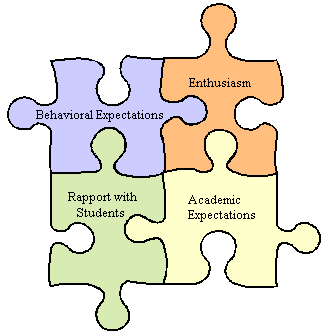Engagement
Getting and keeping students on-task during classroom time; that is, involving students in legitimate curriculum activities…effective teachers make certain moves to engage students’ attention: to capture it initially, to maintain it, and to refocus it when it wanders off course.
Saphier, Haley-Speca, & Gower, 2008
In our recent work with Teaching Standard 5: Classroom Environment, we have talked a lot about the importance of student engagement. Marzano is one of the leading researchers in this area, so I reviewed his work this weekend (The Highly Engaged Classroom, Marzano). Knowing that we are in a constant state of initiatives, I highlighted a couple of things that are already happening - but could benefit from a little reinder! These are just a few from his list of many - see the link if you're interested in learning more.
Have a great week -
Sue
1. Provide Student Choice
Research has shown that providing choices to students of all age levels often increases their intrinsic motivation. Choice in the classroom has also been linked to increases in student effort, task performance, and subsequent learning. However, to reap these benefits, a teacher should create choices that are robust enough for students to feel that their decision has an impact on their learning. In order to incorporate choice into the classroom, we recommend teachers provide choice to students in four ways: (1) choice of tasks, (2) choice of reporting formats, (3) choice of learning goals, and (4) choice of behaviors.
2. Teacher's Positive Demeanor
A teacher can communicate a positive demeanor through demonstrating enthusiasm and intensity, both of which have been associated with student engagement and achievement. Clearly, relationships students have with the teacher have a profound effect on their perceptions of being welcomed, accepted, and supported, which helps establish an affective tone that promotes student encouragement.
If pacing is too slow, energy in the classroom drops and attention wanes; however, if the pacing is too fast, students can be confused and frustrated. To help achieve a balance, focus on pacing when handling transitions, assigning seatwork, and presenting new content.
4. Four Driving Questions
1. How do I feel?
2. Am I interested?
3. Is this important?
4. Can I do this?
If the information presented is not considered interesting, the working memory will not process it. Engagement is defined by importance; if the information is not deemed important, the working memory will not maintain it for long. If students do not believe they can perform the tasks, the brain will eventually reject it.
